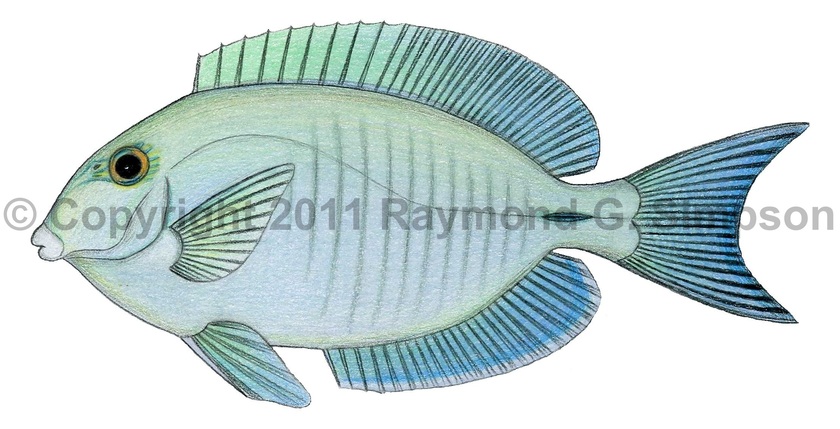
Common Name
Doctorfish
Year Described
Bloch, 1787
Identification
Dorsal Fin: IX, 24-25
Anal Fin: III, 22-23
Pectoral Fin: 16-17
Pelvic Fin: I, 5
Gill Rakers: 16-19
Teeth: 18 in upper jaw, 20 in lower jaw
Body deep, oval-shaped, and compressed. Head profile steep with eye high on head. Mouth terminal and very small. A single blade-like spine on both sides of caudal peduncle. Scales ctenoid and small, covering body, parts of head, and fin bases. Caudal fin emarginate.
Color
Body gray, light olive, blue, or blue-green, with 8-12 narrow dark bars on side (sometimes obscure). Dorsal and anal fins body-colored with narrow blue lines, becoming all blue on the fin margins. Fin edges pale blue. Caudal fin body-colored, grading to bright blue on the posterior margin. Caudal base often with a white band. Yellow lines radiate from eye. Blue line around dark caudal spine. Mouth and pectoral base often paler than body. Pectoral fin dark with a yellow blotch.
Size
Common to 25cm. Maximum size to 34cm.
Habitat
Coral reefs, rocky areas, and sandy areas near seagrass beds. Forms schools who graze on algae.
Range
Massachusetts to SE Brazil, including Bermuda, the eastern Gulf of Mexico, and the Caribbean islands.
References
Randall, J.E. 2002. Acanthuridae (pp 1801-1805). In: Carpenter. 2002. The living marine resources of the Western Central Atlantic. Vol. 3: Bony fishes part 2 (Opistognathidae to Molidae), sea turtles and sea mammals. FAO Species Identification Guides for Fisheries Purposes. American Society of Ichthyologists and Herpetologists Special Publication No. 5.